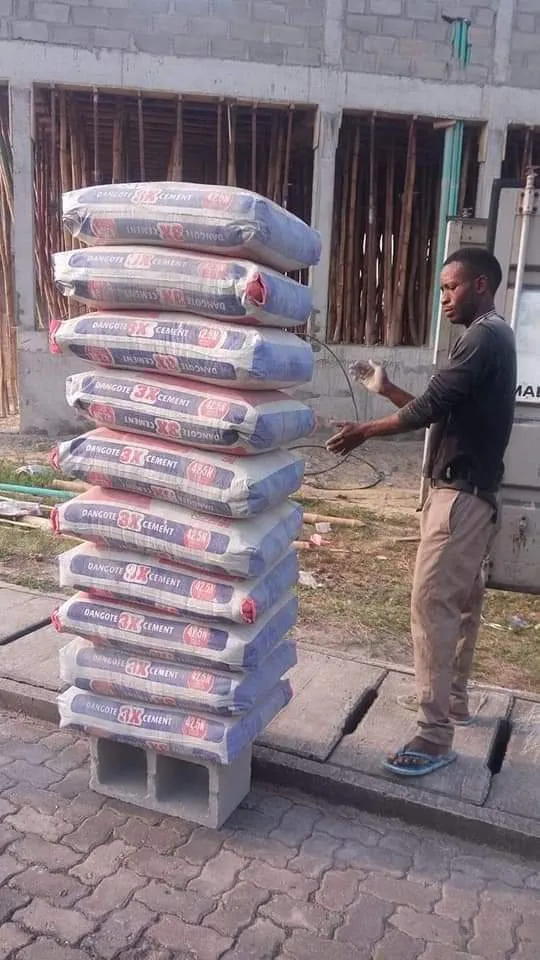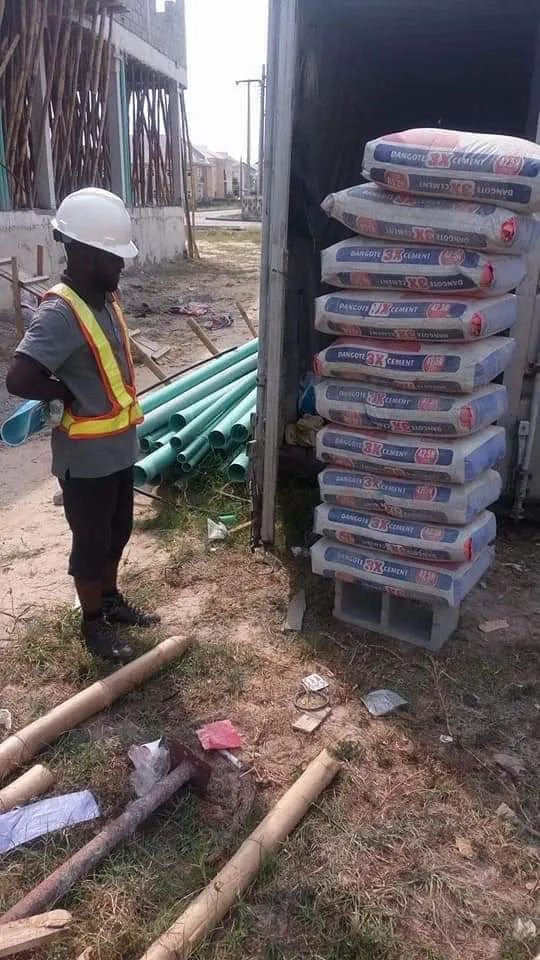
Site Compressive Strength Test (Manual) Carried On Two-Cell Hollow Sandcrete Block (450mm x 225mm x 225mm)
Date: 1st of February, 2017
Time: 11am - 4pm
Method: Manual
Site Location: Northern Foreshore Estate, Lekki
Test Conducted by: Abdulhameed, A. Shola, Nigeria
• Procedure:
I. A sample of two-cell hollow sandcrete block was taken from the supplied batch.
II. The flat side of the sample was placed on an even smooth floor.
III. 500kg of Dangote 3X Cement (that is, 10bags) was imposed on the other flat side of the block. Care was taken while placing the load on the sample in order not to create unnecessary movement.
IV. Wrist watch was used to record the time.
• Findings:
The loaded sample was under the static load of 500kg for 5hours (as at the time of writing this test report) without cracks. There is tendency that it will take more hours without cracks, with time.

• Conclusion:
Site experience in Lagos have shown that the average compressive strengths of two-cell hollow sandcrete blocks used in most of the building construction projects are below the standard recommendation by Building Codes. The result of this test has shown that 75% (author's statistics) of Block Merchants/Suppliers produced blocks below 0.6N/mm2 as against theminimum compressive strength of sandcrete (as stated in the Nigeria Industrial Standard NIS 87:2000) ranges between 2.5N/mm2 to 3.45N/mm2 for non-load bearing and load bearing respectively. The author focuses on the latter.
While 10% of Block Merchants produced blocks above 3.6N/mm2. The sample under investigation can be classified under the second categories base on experience and consultation.
